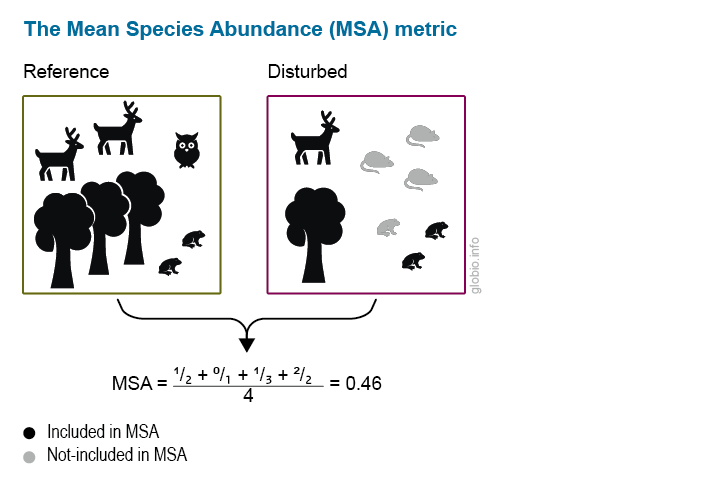Quoted from: https://www.globio.info/what-is-globio
The Mean Species Abundance (MSA) metric is an indicator of local biodiversity intactness. MSA ranges from 0 to 1, where 1 means that the species assemblage is fully intact, and 0 means that all original species are extirpated (locally extinct). MSA is calculated based on the abundance of individual species under influence of a given pressure, compared to their abundance in an undisturbed situation (natural situation/reference). Only species present in the undisturbed situation are included, and increases in individual species abundance from the reference to the impacted situation are ignored. This is done to avoid the indicator being inflated by opportunistic or generalist species that benefit from habitat disturbance.
For example, in the picture below, three species decrease in abundance (tree, deer and owl) and two show an increase (frog, rodent). As new species and abundance increases do not count, the MSA is calculated as the mean of the abundance ratios of the four species in the reference situation, whereby the increase in frog abundance is ignored.









